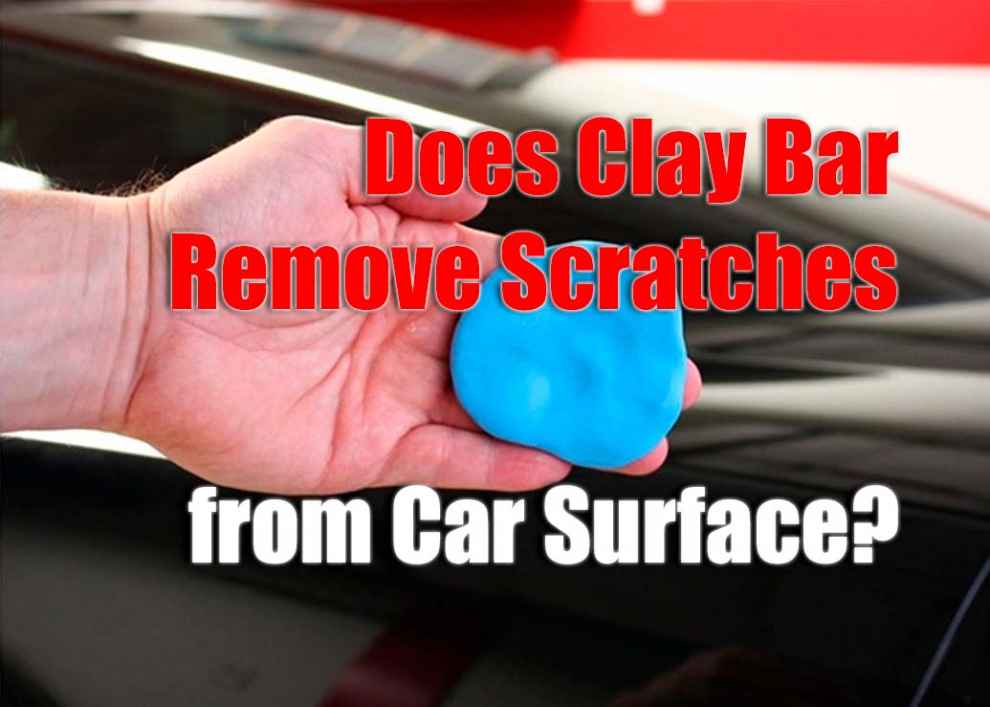When it comes to maintaining the pristine look of your car, one often wonders about the best methods to eliminate those inevitable scratches that mar its surface. In the realm of car care, clay bars are frequently mentioned as a go-to solution. Known for their ability to pick up fine particles and debris from the car’s exterior, clay bars are a favorite among auto enthusiasts. However, there’s a common query that perplexes many: does clay bar remove scratches from the car surface? This article aims to explore the effectiveness of clay bars in dealing with scratches, separating fact from fiction. We’ll delve into how clay bars work, their intended purpose in car maintenance, and whether they hold the secret to erasing those unwanted blemishes from your vehicle’s exterior.
How Does a Clay Bar Work?
A clay bar is a unique tool in the world of car detailing, designed not for heavy-duty repair work, but for meticulous surface cleaning. Its primary function is to remove particulate contaminants that adhere to a car’s paint. These can range from industrial fallout, road tar, to tree sap and bird droppings. When you slide a clay bar across the lubricated surface of a car, it acts like a magnet, drawing out these tiny particles from the paint. This process is crucial because such contaminants, if left untreated, can cause microscopic damage to the paint over time, potentially leading to rust. While a clay bar effectively prepares the surface for further detailing by creating a smooth and clean canvas, its role is limited to surface-level cleaning. It’s essential to understand that while it is excellent for what it does, a clay bar does not have corrective properties for paint scratches. If you’re interested in maintaining the pristine appearance of your Jeep hardtop, consider exploring the options for the best paint for Jeep hardtop to keep it looking brand new.
 Effectiveness of Clay Bar in Scratch Removal
Effectiveness of Clay Bar in Scratch Removal
Addressing the heart of the matter, clay bars, despite their efficiency in surface cleaning, do not remove scratches from car surfaces. The scratches on a car are indentations or cuts in the paint or clear coat, and a clay bar is simply not designed to repair such imperfections. While using a clay bar can create a smoother surface and enhance the overall shine of the vehicle, it does not alter or fill in the physical depth of a scratch. For superficial scratches, the improved cleanliness and smoothness post-claying might make them less visible, but this is not due to the clay bar repairing them. It’s important for car owners to have realistic expectations about what clay bars can achieve. For actual scratch removal, other methods like polishing or more advanced paint correction techniques are required.
Alternative Methods for Scratch Removal
For effectively addressing scratches on your car’s surface, there are several alternative methods to consider. For shallow surface scratches, using a fine polishing compound or a scratch removal product can be effective. These products work by gently smoothing out the edges of the scratches, making them blend into the surrounding paint. For deeper scratches that may have penetrated through the clear coat, methods like wet sanding followed by polishing can be employed. However, these techniques require a certain level of expertise to avoid further damage to the paint. In cases where scratches are too deep, touching up with matching paint or even professional repainting might be necessary. Additionally, applying a protective clear coat or paint sealant after these treatments can help prevent future scratches. It’s important to assess the depth and severity of the scratches on your vehicle and choose an appropriate method that safely restores the surface without causing additional damage.
Conclusion
In conclusion, while clay bars are an invaluable tool in the car detailing arsenal for achieving a clean and smooth surface, they are not designed for scratch removal. Understanding their purpose and limitations is crucial for car owners looking to address surface imperfections. For scratches, alternative methods such as polishing compounds, wet sanding, or professional services should be sought. Regular maintenance, including careful washing and applying protective coatings, can also help minimize the risk of scratches. Ultimately, combining proper cleaning techniques, using the right tools for the job, and understanding the nature of different types of car surface damage is key to maintaining your vehicle’s appearance and integrity.

 Effectiveness of Clay Bar in Scratch Removal
Effectiveness of Clay Bar in Scratch Removal
Add Comment